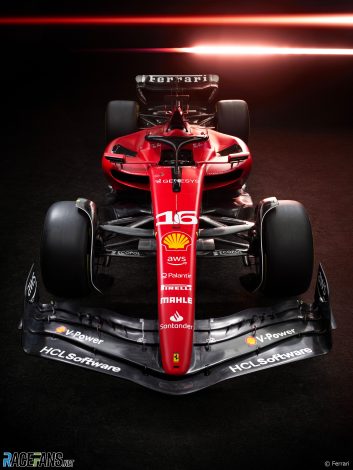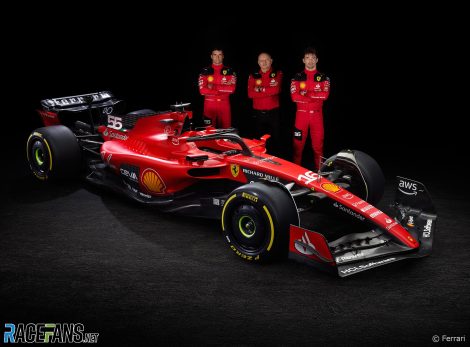Ferrari says the new SF-23 they launched today is changed in many ways from its predecessor despite its visual similarities.
The team won four races with last year’s car, the F1-75, but lost its early lead in the standings to eventual champions Red Bull. By the end of the season they were increasingly overhauled by rivals Mercedes in terms of performance, though Ferrari beat them to second in the championship.
While the SF-23 is outwardly similar to its predecessor, the team’s chassis designer Enrico Cardile said extensive changes have been made with its design.
“Our 2023 car is an evolution of the one we raced last year, but in reality, it has been completely redesigned,” said Cardile.
Part of this was a consequence of a rules change aimed at reducing the porpoising some teams encountered by increasing the height of the floor edges by 15mm, among other tweaks. Despite that restriction, Cardile says the SF-23 produces more downforce than its predecessor.
“On the aerodynamic side, we increased vertical downforce, to adapt further to the new aero regulations and achieve the desired balance characteristics,” he said.
The car’s suspension geometry has been the focus of extensive work, he added. “The suspension has also been redesigned, to support aerodynamics and increase the range of adjustments that can be made to the car at the track.
Advert | Become a RaceFans supporter and

“The most obvious changes are in the area of the front suspension where we have moved to a low track rod. The front wing is also different, as is the construction of the nose, while the bodywork is a more extreme version of what we saw last season.”
Ferrari concentrated on improving the reliability of its power unit following a series of failures last year which cost Charles Leclerc potential wins in Spain and Azerbaijan. As power unit design was frozen by the regulations at the start of last year, teams are only allowed to make alterations for reliability reasons.
“PUs have been frozen since last year, including fluids, oil and fuel and the only modifications allowed are those related to reliability, which was our Achille’s heel last season,” said Enrico Gualtieri, head of Ferrari’s power unit department.
The effort to prevent further breakdowns this year involved all areas of the engine, he said. “We focused on the internal combustion engine and the electric motors. At the same time,…
Click Here to Read the Full Original Article at RaceFans…

